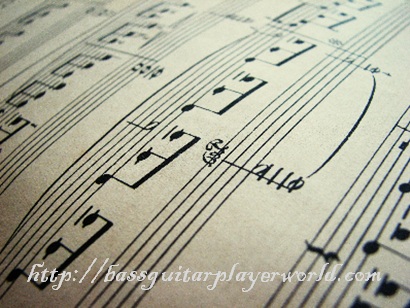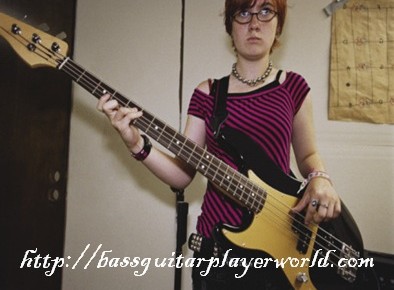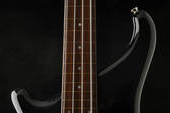Learn How to Read Guitar Tabs in 5 Minutes
 Guitarists often overlook the fact that without bass players, they would be little more than background noise amidst a wall of drums and vocals.
Guitarists often overlook the fact that without bass players, they would be little more than background noise amidst a wall of drums and vocals.
Bass guitar is the rhythmic center of a band; it holds the groove together. Luckily, for such an important element of a band, bass tablature is extremely easy to read.
Before you learn to read tablature, familiarize yourself with the notes of your bass. Play up and down the neck on all four, five, or even six strings. Get a good feel for the spacing of the frets. Be sure you can tell which frets create which pitches; this will help you properly use tablature.
Not everyone can memorize an entire line of numbers, so learning to discern notes and fret spacing will help you to play what you are reading, while you are reading it. If you use a finger instead of a pick, familiarize yourself with the feel of each string’s respective gauge.
This will allow you to play without looking and stay on the proper string. It may sound elementary, but you would be surprised how easy it is to play on the wrong string and not even notice.
Using a Visual Representation of Strings With 4 Lines
Once you know your instrument, you can begin to learn to read tablature. First off, the most important that to pay attention to is the line spacing.
||—————-||
||—————-||
||—————-||
||—————-||
Above is a basic four string bass tab stanza. Notice how there is four sets of lines surrounded by two sets of brackets. Each line represents a bass string. The strings are arranged from lowest to highest, bottom to top.
Take this tab for instance:
||—————-||
||—————-||
||—————-||
||-0————–||
The zero represents an open string being played. Because it is on the last line, we know that the string is our lowest string, which if we were in standard tuning would be an E. Because the zero represents an open string being played, we now know that the string number relates to the fret number.
Using this knowledge, let’s craft a simple bass rhythm.
||——————||
||——-1-2-1—- ||
||—2-3——-3–||
||-0—————||
According to this tab, we would start of by playing an open note on our E string. Then we would follow up by playing the second and third fret on our A string. Continuing out ascension, we play the first and second fret on our D string, and then we begin to descend, playing the first fret once again on our D string, followed by the third fret on our A string.
Tablatures Are Convenient But Not Almighty
Now you may notice something a bit confusing about bass guitar tablature; there are no note values. Tabs do not contain note values, as they are meant to be played directly with the songs. Because tabs are meant for those with very little or no musical knowledge at all, they are extremely basic in the amount of information that they convey and more importantly, fail to convey rhythm counting in your bass playing.
This means that while tabs are great tools for beginners learning to play bass, soon enough they become confusing and frustrating to use. Keep this in mind, as learning to read music gives the benefits that tablature lacks.
Now that you understand how to read tabs, put the skill to use and learn some songs!
You Need To Check This Out
If you want to get your shortcut to bass playing success, Teach Me Bass Guitar is everything you will ever need. It is the ultimate DVD program that takes you step by step from a beginner through to being an advanced player. Learning at your own pace enables you to progress way faster than what a traditional course at a school could offer.
For a limited time, get a WHOPPING 25% off the massive course…
Related Articles
Comments are closed.






